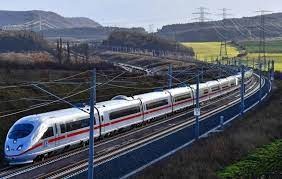Will flying ever be obsolete thanks to these quick trains?
High-speed trains are becoming a strong opponent to air travel in a world where environmental concerns are on the increase and tourists want more hassle-free travels. These high-speed trains promise speedier and more comfortable travel experiences while also being environmentally friendly thanks to continuous technology breakthroughs that are transforming rail services throughout the world.
Japan’s Shinkansen: Japan has established a high bar with its network of fast trains, especially the Tokaido line. Trains on this route, which connects Tokyo with popular tourist locations including Yokohama, Nagoya, Osaka, and Kyoto, may travel at breathtaking speeds of up to 177 miles per hour (285 km/h). This famous route, the world’s first shinkansen, which debuted in 1964 for the Summer Olympics, is a prime example of high-speed rail’s potential.
Cairo’s Future Connection: With a large-scale project, Egypt is prepared to join the high-speed rail revolution. With 660 km (400 miles) of lines, this project will link Cairo to the New Administrative Capital and other communities. Speeds of up to 155 mph (250 km/h) are to be expected, providing an exhilarating chance to explore beyond Cairo’s busy streets.
Even though the Cairo high-speed rail project won’t be finished until 2027, it promises a quick and beautiful ride over the parched Egyptian desert. In addition to offering commuters and visitors comfort, the project is anticipated to create 15,000 new employment in the area thanks to a contract worth £3.6 billion ($4.5 billion) and a cooperation with Siemens.
These high-speed trains may provide a compelling alternative to flying as technology continues to change the rail travel environment, particularly for individuals looking for eco-friendly, effective, and fun transportation choices. The rails may hold the key to transportation in the future.







